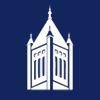School Profile
Historical Background: Lander University is located in Greenwood, South Carolina, USA. Its history can be traced back to 1872, when it was Williamston Women's College. After many changes and developments, it became South Carolina State Industrial College in 1904 and was officially renamed Lander University in 1992.
Geographical Location and Campus Environment: The campus is located in the suburbs of Greenwood and covers an area of 270 acres. The campus environment is beautiful, with many trees and open spaces. The school's architectural styles are diverse, including modern teaching buildings, student dormitories and historical buildings. The surrounding community provides students with a variety of living facilities, such as restaurants, shops, etc.
Academic Situation
Colleges and Majors: The school has multiple colleges, including the School of Business, the School of Education, the School of Arts, the School of Nursing and Health Careers, the School of Science and Mathematics, etc. The professional fields provided are extensive, covering business administration, accounting, marketing, education (including early childhood education, special education and other educational directions), English, history, nursing, biology, chemistry, mathematics and many other disciplines. For example, the business school's courses focus on cultivating students' business leadership and practical skills, and have close cooperative relationships with local companies to provide students with internship and employment opportunities.
Teaching model and curriculum system: The small class teaching model is adopted, and the teacher-student ratio is about 1:14. This teaching model enables teachers to better pay attention to the learning progress of each student. The curriculum system focuses on the combination of theory and practice. In addition to classroom teaching, it also includes practical teaching links such as experimental courses, internships, and field trips. For example, nursing students have a lot of clinical internship time to practice nursing skills in hospitals and other medical institutions and accumulate practical work experience.
Degree Awarding: Randall University awards bachelor's and master's degrees. Bachelor's degrees cover many of the above-mentioned professional fields, and master's degrees include Master of Education (such as curriculum and teaching, educational leadership, etc.), Master of Business Administration, etc., providing students with educational opportunities at different levels.
Student situation
Student size and composition: The school has about 3,000 students, and the student group has a certain degree of diversity. Including students from different states in the United States and international students. The gender ratio of students is relatively balanced, with slightly more females than males. The racial composition is also quite diverse, with students of different races such as whites, African Americans, and Latinos.
Student Activities and Clubs: The school has a variety of student clubs and organizations covering multiple fields such as academics, culture, sports, and art. For example, there are academic honor clubs, such as the Honor Society, which encourages students to pursue academic excellence; cultural clubs include international student organizations, which hold various cultural exchange activities to allow students to understand the cultures of different countries and regions; sports clubs include basketball teams, football teams, etc. Students can exercise their bodies and cultivate a spirit of teamwork by participating in sports activities.
Student Services and Support System: The school provides students with comprehensive services, including academic counseling, career planning and employment guidance, and mental health counseling. Academic counseling helps students choose appropriate courses and majors, and the career planning and employment guidance department provides students with internship and employment information, organizes job fairs and other activities, and helps students enter the workplace smoothly.
Faculty Strength
The faculty is of high quality, and most of the teachers have a doctorate or the highest degree in related fields. They not only have certain achievements in academic research, but also have rich teaching experience. Teachers actively participate in teaching reform and curriculum development to adapt to the changing educational needs and students' learning needs. For example, in the School of Science and Mathematics, teachers often carry out scientific research projects and integrate scientific research results into teaching content, so that students can be exposed to cutting-edge knowledge in the subject.
Admission requirements and financial aid
Admission requirements: For undergraduate admission, students are generally required to have a high school diploma and provide standardized test scores (such as SAT or ACT), and they need to submit application materials such as letters of recommendation and personal statements. International students are also required to provide proof of English language proficiency, such as TOEFL or IELTS scores. For graduate admission, different majors have different requirements, usually including undergraduate degree certificates, relevant professional backgrounds, letters of recommendation, personal statements and standardized test scores (such as GRE or GMAT, which may not be required for some majors).
Financial aid policy: The school provides a variety of financial aid methods, including scholarships, grants, loans, etc. Scholarships are mainly based on students' academic performance, leadership, community service and other factors. Grants consider students' financial needs more. The school will also assist students in applying for federal and state financial aid programs to help students reduce their financial burden and complete their studies smoothly.
-

Harvard University
-
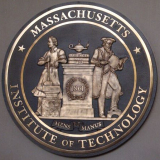
Massachusetts Institute of Technology
-
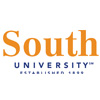
South University
-

University of West Georgia
-
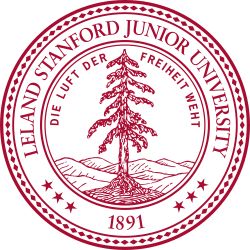
Stanford University
-

Northwest Nazarene University
-
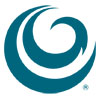
Hawaii Pacific University
-
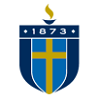
Shorter University
-

Nova Southeastern University
-
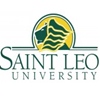
Saint Leo University
-

Mesoamerican University
-

Istmo University
-

Mariano Galvez University of Guatemala
-

Regional University of Guatemala
-

Galileo University
-

Francisco Marroquín University
-

Rafael Landívar University
-

University of the Valley of Guatemala
-

University of San Carlos of Guatemala
-

Technological Institute of Tlaxcala Plateau
-

Golfo University
-

Technological University of South Sonora
-

Technological University of Huejotzingo
-

Tizimín Institute of Technology
-

Chilpancingo Institute of Technology

